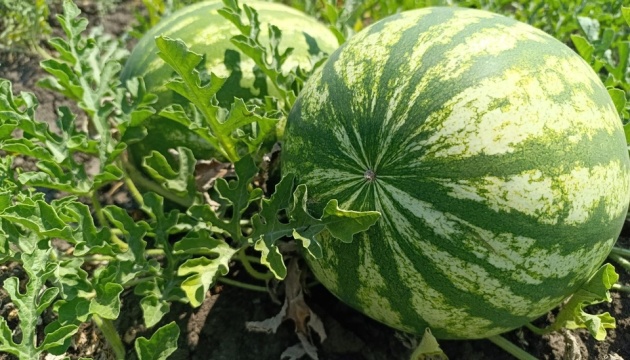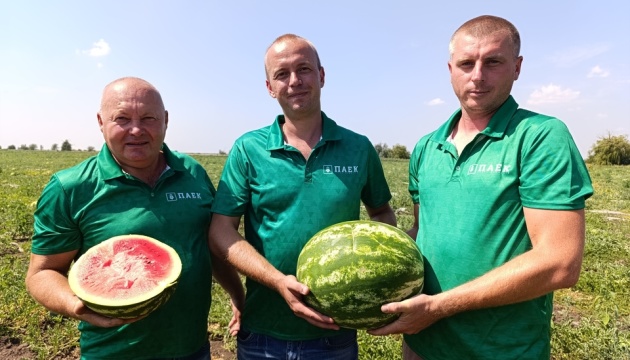
Mykolaiv region’s harvest of melons, watermelons grows 20% this year
This year, all categories of farms in the Mykolaiv region harvested 19.5 thousand tonnes of gourds, which is 20% more than last year.
Olena Piskun, Director of the Agricultural Sector Department at the Mykolaiv Regional State Administration, said this in a commentary to Ukrinform.
“This year, all categories of farms in the Mykolaiv region harvested 19.5 thousand tonnes of gourds, which is 20% more than last year, including 14.7 thousand tonnes of watermelons,” Piskun said.
According to her, for the 2024 harvest, farmers sowed 2,241 hectares with gourds, including 1,550 hectares with watermelons (up 20% against 2023), 691 hectares with melons (up 8%).

The majority of gourds are located in private households, representing approximately 80% of the total. The remaining gourds are situated in agricultural enterprises.
“In recent years, the share of gourds in agricultural enterprises has increased. Gourds grown in the Mykolaiv region are sold to the domestic market,” Piskun said.
One such company is the South Agrarian Export Company (PAEK), which is one of the largest vegetable producers in the region. Thanks to its specialists, the Mykolaiv region was one of the first in Ukraine to enter the market with ultra-early watermelons.
“This year, we managed to successfully cultivate a range of watermelon varieties at our facilities. We commenced the sale of melons in June and continue to do so today thanks to the use of a range of watermelon varieties with different ripening periods in our crop structure,” said Yuriy Kormyshkin, CEO of the company.
According to him, the summer heat also affected the yield of gourds, in particular melons. “But we are satisfied with the quality of the products. Although our southern sun is harsh this year, including a prolonged period of intense sunlight in the spring, we have successfully cultivated early-season sweet watermelons and melons that are not only flavorful but of high quality,” he said.
As reported, the heat wave has resulted in a 30% reduction in harvests in the Mykolaiv region, which is unlikely to lead to a decline in prices for these products.


